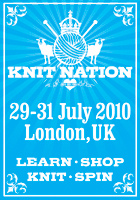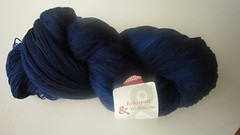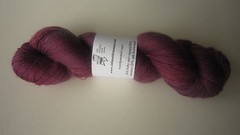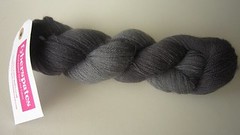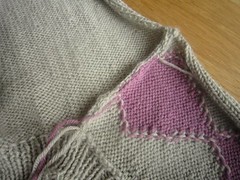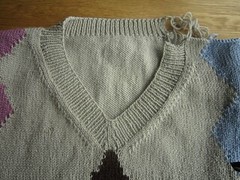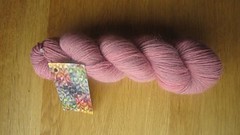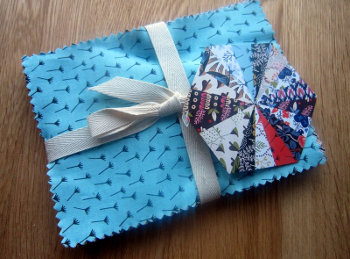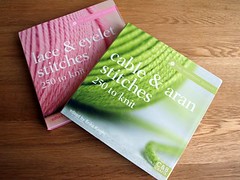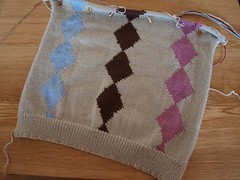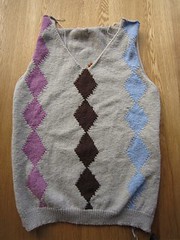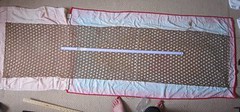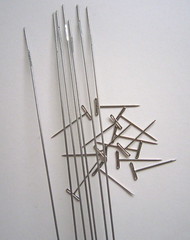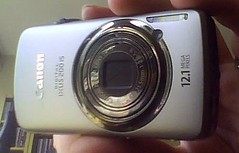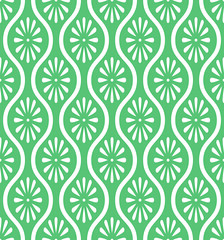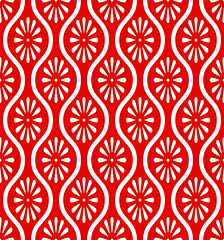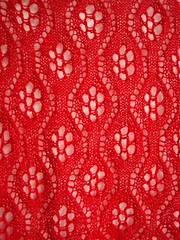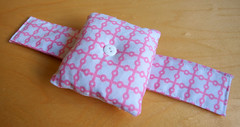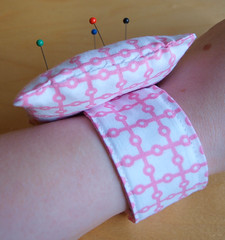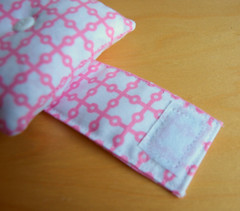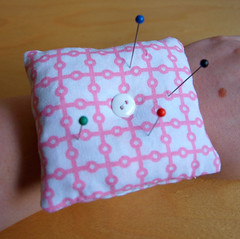It’s taken a little longer to get this post written than I thought but better late than never!
The Class
I had signed up for Anne Hanson‘s Advanced Lace Knitting class and, despite a horrible cold, I really enjoyed it. I didn’t learn as much as I had hoped I would — mainly because I’ve already done a reasonable amount of lace knitting involving the techniques which were covered. Anne’s overview of different types of lace knitting and knitted lace, and the chance to look at some of her extensive collections of swatches were very interesting. I also picked up some tips about knitted-on borders which are already proving useful.
I was right about the yarn I selected for the class sampler project though; it was very hairy. By the end of the class, my black jeans looked like I had had a cat sitting on my lap for hours. I don’t intend to finish the sampler since I really don’t have any use for a doll-sized shawl but I’m not really sure what else I would use the yarn for. I think it will go back in the basket till I can come up with a project where I won’t mind it “shedding”.
The Yarn
I wasn’t looking for anything in particular at the Knit Nation marketplace but thought I might grab some laceweight or fingering yarn for future shawl-knitting. I ended up with the following:
Wollmeise Lacegarn in brilliant blues — partly to see what all the hype is about and partly because they were giving away free Gummi Bears (Steven pointed out that there are cheaper ways to acquire Gummi Bears, which I can’t really argue with but which isn’t really the point.) I’m thinking about using this for a Victorian Lace Today project because the yardage is so good. I’m not even sure I suit blue but I just can’t stop admiring the colours in this.
Old Maiden Aunt — This is an alpaca/merino/silk blend laceweight. No idea what I’ll use it for but the colours are gorgeous and it’s so, so soft. 1,300 yards per 100g is also pretty good yardage.
Fyberspates Thick Nef Lace — an alpaca/silk/cashmere laceweight this time. I’m thinking about something elegant for wearing to work. Not that I need to be particularly elegant at work but something about this yarn just conjures up images of high-powered female New York lawyers. (Don’t ask me why, sometimes it’s better not to investigate the inner workings of my brain too much!)
